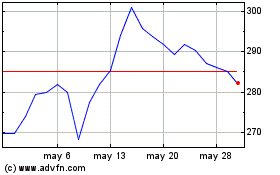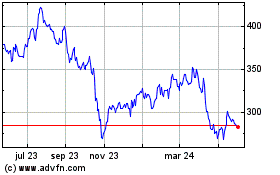UNITED STATES
SECURITIES AND EXCHANGE COMMISSION
Washington, D.C. 20549
FORM SD
SPECIALIZED DISCLOSURE REPORT
BIO-RAD LABORATORIES, INC.
(Exact Name of Registrant as Specified in Charter)
Commission File Number: 001-07928
| | | | | | | | |
| Delaware | | 94-1381833 |
| (State or Other Jurisdiction of Incorporation) | | (IRS Employer Identification Number) |
1000 Alfred Nobel Dr.
Hercules, California 94547
(Address of principal executive offices, including zip code)
Courtney C. Enloe
(510)724-7000
(Name and telephone number, including area code, of the person to contact in connection with this report.)
| | | | | |
| Check the appropriate box to indicate the rule pursuant to which this form is being filed, and provide the period to which the information in this form applies: |
| |
| ☒ | Rule 13p-1 under the Securities Exchange Act (17 CFR 240.13p-1) for the reporting period from January 1 to December 31, 2023. |
Section 1 - Conflict Minerals Disclosure
Item 1.01 Conflict Minerals Disclosure and Report
Bio-Rad Laboratories, Inc. (the “Company”) evaluated its current product lines and determined that tin, tungsten, tantalum and gold (“3TG”) are necessary to the functionality or production of certain products manufactured by the Company or contracted by the Company to be manufactured and are required to be reported in the calendar year covered by this specialized disclosure report. Accordingly, the Company conducted in good faith a reasonable country of origin inquiry regarding the 3TG in our products that was reasonably designed to determine whether any such 3TG originated in the Democratic Republic of the Congo or an adjoining country or were from recycled or scrap sources.
Conflict Minerals Disclosure
Based on our reasonable country of origin inquiry, we have filed a Conflict Minerals Report, which is attached hereto as Exhibit 1.01 and is publicly available at the Investor Relations section of our website under the heading Corporate Governance: https://www.bio-rad.com/en-us/corporate/corporate-governance?ID=NEUKYV15 The content of our website referred to in this Form SD is included for general information and is not incorporated by reference in this Form SD.
Item 1.02 - Exhibit
See Exhibit 1.01 attached hereto.
Section 2 - Exhibits
SIGNATURES
Pursuant to the requirements of the Securities Exchange Act of 1934, the registrant has duly caused this report to be signed on its behalf by the undersigned thereto duly authorized.
| | | | | | | | | | | |
| BIO-RAD LABORATORIES, INC. |
| (Registrant) |
| | | |
| | | |
| | | |
| Date: | May 9, 2024 | | /s/ Courtney C. Enloe |
| | | Courtney C. Enloe |
| | | EVP, General Counsel and Secretary |
Exhibit 1.01
Bio-Rad Laboratories, Inc.
Conflict Minerals Report
This Conflict Minerals Report of Bio-Rad Laboratories, Inc. (“Bio-Rad” or the “Company”) is for calendar year 2023 in accordance with Rule 13p-1 (“Rule 13p-1”) under the Securities Exchange Act of 1934. The Securities and Exchange Commission (“SEC”) adopted Rule 13-p-1 to implement reporting and disclosure requirements relating to conflict minerals as directed by the Dodd-Frank Wall Street Reform and Consumer Protection Act of 2010. Rule 13p-1 imposes certain reporting obligations on SEC registrants whose manufactured products contain conflict minerals which are necessary to the functionality or production of their products. Conflict minerals are defined as cassiterite, columbite-tantalite, gold, wolframite, and their derivatives, which are limited to tin, tantalum, tungsten and gold (“3TG”).
If a registrant can determine that the conflict minerals in its products originated from sources other than the Democratic Republic of the Congo (the “DRC”) or an adjoining country, or from recycled and scrap sources, the registrant must submit a specialized disclosure report under Form SD that describes the steps that the registrant took to determine the origin of the conflict minerals in its products.
If a registrant has reason to believe that any of the conflict minerals in its supply chain may have originated in the DRC or an adjoining country, or if the registrant is unable to determine the country of origin of those conflict minerals, then the registrant must exercise due diligence on the conflict minerals’ source and chain of custody, and the registrant must submit a Conflict Minerals Report to the SEC that includes a description of those due diligence measures.
Company and Product Overview
Bio-Rad manufactures and supplies the life science research, healthcare, analytical chemistry and other markets with a broad range of products and systems used to separate complex chemical and biological materials and to identify, analyze and purify their components. We operate in two industry segments designated as Life Science and Clinical Diagnostics. Our Life Science segment develops, manufactures and markets a broad portfolio of many thousands of products that serve a global customer base. Our Clinical Diagnostics segment designs, manufactures, markets and supports tests systems, informatics systems, test kits and specialized quality controls that serve clinical laboratories in the global diagnostics market. We supply several thousand products that cover more than 300 clinical diagnostic tests to the in vitro diagnostics test market. These products consist of reagents, instruments and software, typically provided to our customers as an integrated package to allow them to generate reproducible test results.
We determined that 3TG are necessary to the functionality or production of certain products (primarily apparatus and instruments) manufactured or contracted to be manufactured by both our Life Science and Clinical Diagnostics segments.
Conflict Minerals Policy
Our policy with respect to the sourcing of conflict minerals can be found at the Investor Relations section of our website under the heading Corporate Governance: https://www.bio-rad.com/en-us/corporate/corporate-governance?ID=NEUKYV15 The content of our website referred to in this Conflict Minerals Report is included for general information and is not incorporated by reference in this report.
Reasonable Country of Origin Inquiry
Our reasonable country of origin inquiry (“RCOI”) was implemented by a cross-organizational team consisting of members from our manufacturing, procurement, information systems, legal and compliance departments. This team reported to designated members of our executive management team. We utilized a third-party service provider to send surveys to over 250 of our direct suppliers of materials for our products that we determined were “in scope”, i.e. suppliers for products that contained or were likely to contain 3TG. We did not send surveys to suppliers providing packaging (product preservation), or chemical and biological materials, or who were below certain minimum purchase thresholds. The suppliers surveyed were asked to complete and return the Responsible Minerals Initiative’s (RMI) Conflict Minerals Reporting Template (CMRT) version 6.4 or higher. Communications sent to the suppliers included the CMRT, as well as access to educational material on conflict minerals and assistance on how to complete the reporting template. We reviewed the responses that we received from our suppliers and followed up by email and/or telephone with those suppliers who did not respond to our requests for information. We utilized the third-party service provider to assist in analysis of the survey responses, including follow up with suppliers who provided incomplete or unclear information. We prioritized responses from suppliers based on certain “red flags” identified by the third-party service provider, namely those suppliers that indicated they sourced from the DRC and whose due diligence practices have not been audited against a standard in conformance with the Organization of Economic Co-operation and Development (“OECD”) Due Diligence Guidance for Responsible Supply Chains of Minerals from Conflict-Affected and High-Risk Areas, such as the Responsible Minerals Initiative’s (RMI) Responsible Minerals Assurance Process (RMAP). We then researched and reviewed the information provided by these suppliers and followed up with them if deemed necessary.
Due Diligence Process
In accordance with Rule 13p-1, we exercised due diligence measures on the source and chain of custody of 3TG in our products. In conducting our due diligence, we applied guidance from the OECD Due Diligence Guidance for Responsible Supply Chains of Minerals from Conflict-Affected and High-Risk Areas, Third Edition and related Supplements on Tin, Tantalum and Tungsten and on Gold (collectively, the “OECD Guidance”), an internationally recognized due diligence framework.
Our due diligence process included:
•the development of a conflict minerals policy, as set forth above;
•inclusion of conflict minerals provisions in many of our supply chain documents, such as purchase orders, supply agreements and our Supplier Code of Conduct;
•establishment and maintenance of governance structures with cross-functional team members and senior executives to implement and support our conflict minerals policy and procedures;
•communication with suppliers based on their responses to our survey; and
•retention of relevant documentation from our RCOI and due diligence procedures.
However, because we are several levels removed from the sourcing of 3TG, we were limited by the information that our suppliers provided to us. Our direct suppliers were similarly reliant upon information provided by their suppliers. In the majority of cases, our suppliers were not able to determine the source of 3TG, if any, in their products, or whether or to what extent the 3TG in their products were from scrap or recycled sources. For those suppliers that did provide information relating to their sources, i.e., smelters and refiners, and that indicated they sourced from the DRC, we were not able to definitively trace the parts provided to us by those suppliers to their sources. Therefore, we were unable to identify the smelters or refiners in which the 3TG in our products were extracted or refined or the mines from which the 3TG originated. We expect that as our procurement tracking systems and our industry’s sourcing information improve, we will be better able to determine the source of 3TG in our products.
Bio Rad Laboratories (NYSE:BIO)
Gráfica de Acción Histórica
De Oct 2024 a Nov 2024

Bio Rad Laboratories (NYSE:BIO)
Gráfica de Acción Histórica
De Nov 2023 a Nov 2024




